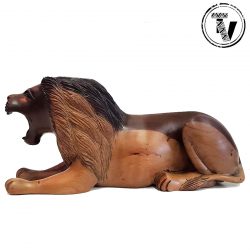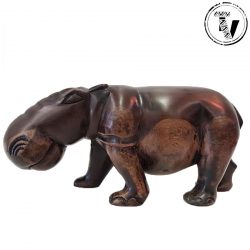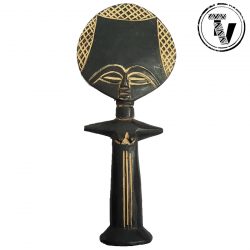Description
Ashanti Akua’ba Fertility Doll
The legend of the origin of the Akua’ba doll comes
from the story of a woman named “Akua”
(many variations of the name are found as there are
many variations of the spelling of “Akua’ba”)
who could not get pregnant and went to a local
diviner or priest and commissioned
the carving of a small wooden doll.
She carried and cared for the doll as if
it was her own child, feeding it, bathing it, and so on.
Soon the people in the village started calling it “Akua” “ba” –
meaning “Akua’s child”, since “ba” meaning child.
She soon became pregnant and her daughter grew up with the doll.
The legend and tradition still live on today…
If an Akan/Asante woman had difficulty conceiving she would be
encouraged to visit a local shrine accompanied by a
senior woman in her family. There she might purchase a figure
such as this, which would be placed for a period on
the altar, later to be reclaimed by the woman along with certain medicines.
The sculpture was then carried, fed,
bathed, and otherwise cared for by the woman as if it was a living baby.
It was thought that in doing this the woman
would have a better chance to have a healthy and beautiful baby.
Once the woman conceived and had a successful
delivery, she would return the figure to the shrine as a form of offering.
If the child died, the Akua’ba might be kept by
the woman as a memorial.
The symbolism of these dolls is specific: “The flat, disk-like
head is a strongly exaggerated conception of the Akan
the ideal of beauty:
Round or oval-shaped heads are considered ideal and this is accomplished
in actual practice by the gently modeling of an infant’s soft cranial bones.
The flat profile of these figures is also more practical when they are carried
against the back wrapped in the woman’s skirt.
Also standard is the ringed neck, a convention for rolls of fat and hence
beauty and prosperity…the small scars were seen on the faces of many
Akua’ba are those made for medicinal purposes as
protection against convulsions. Most Asante Akua’ba has abstracted,
horizontal arms and a cylindrical torso with
breasts and a navel, but ending in a base rather than human legs.






